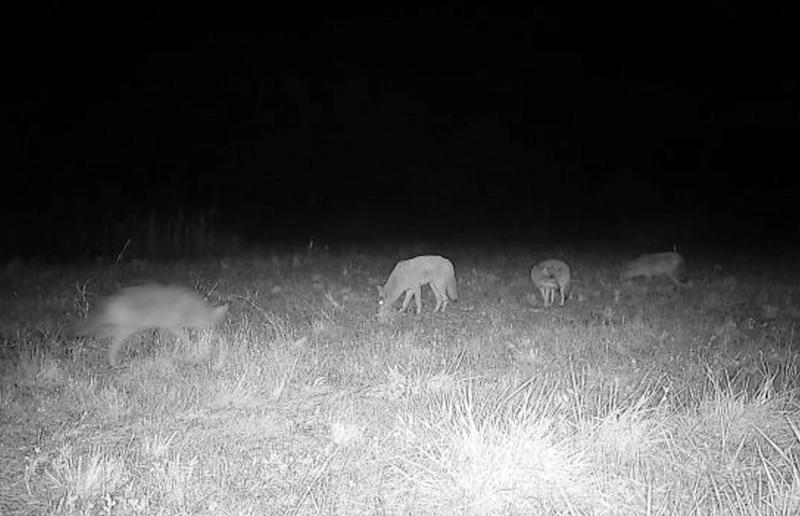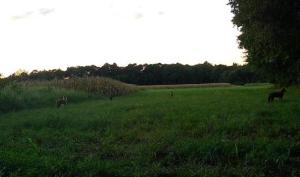Local farmer concerned with Sussex’s coyote population
Local farmer and businessman Kenny Hopkins is raising the alarm for what he says is a growing population of coyotes in Sussex County.
Standing in a clover field behind his home off Route 1, near Cave Neck Road, Hopkins said he began noticing them last year. Now, he said, there’s a whole pack.
“It’s going to devastate turkeys and the local deer herd,” said Hopkins, showing photos of a pack of coyotes taken at night with a trail camera. “You can tell there are more coyotes around because the deer herd is real skittish.”
It’s not just the property behind his house, as Hopkins said he’s heard reports from other hunters that there are coyotes all over Sussex County.
“They have no natural predators and there’s nothing to stand in their way,” said Hopkins.
Hopkins is warning homeowners who live in developments near woods to be on the lookout. Coyotes will come right up to someone’s yard if their dog or cat is left out for extended periods of time, he said.
In an email Nov. 7, Mike Adams, Division of Fish and Wildlife furbearer and small game biologist, said coyotes began colonizing Delaware in the early 1990s, and there is no indication the population in Sussex County is growing any differently than any other area of the state.
Adams said the Department of Natural Resources and Environmental Control monitors the coyote population in multiple ways – documenting public reports of sightings, and hunter harvest and trapper harvest surveys every year. In these surveys, participants report any and all harvested coyotes, he said.
Adams said coyotes were once found in the Midwest and in western United States, but have steadily expanded their range and population size over the past 100-plus years. He said the primary reason for this has been the clearing of forests and the subsequent creation of more open, agricultural and patchy habitat.
“Prior to widescale timber harvests, the East Coast was dominated by large spans of forest that were not ideal coyote habitat,” said Adams.
Additionally, Adams added, their range expanded because large East Coast predators, such as mountain lions and wolves, were extirpated many years ago, while black bear populations were significantly reduced.
Delaware, by all accounts, is the 49th state to get coyotes, said Adams. Coyote populations remain low in Delaware because the Chesapeake Bay is too wide for them to swim across, so the only way they can expand their range is through the narrow stretch of land spanning the northern reaches of the Chesapeake Bay and Delaware River, he said.
Coyote trapping season in Delaware runs Dec. 1 to March 10, with trapping permitted day and night. There is a specific coyote hunting season that begins Sept. 1 and ends Feb. 28. Additionally, there is a year-round coyote depredation order.
Hopkins said he would like to see Delaware law changed to allow for hunting at night with a spotlight like it’s allowed in neighboring states, because coyotes typically move at night. If a person sees one during the day, it’s probably rabid, he said.
The hunting and trapping seasons and the order were set up in 2014 to aid in the management of coyotes, said Adams. DNREC believes the current trapping season, along with the current hunting season regulations, are adequate in managing the state’s relatively low coyote population, he said.
Coyotes are incredibly smart and elusive, said Adams.
“They are cryptic and challenging to harvest. Due to their extreme adaptability, nocturnal nature and cunning ability to avoid human interaction, it is very difficult to hunt coyotes with a high degree of success,” said Adams. “Trapping, on the other hand, accounts for much greater harvest rates of coyotes.”
Over the years, Adams said, there have been rumors of coyotes being introduced unnaturally to the area for a number of reasons – primarily involving the control of the white-tailed deer population.
“The stories of releasing coyotes do have one thing in common – all of them are totally untrue,” said Adams.
























































